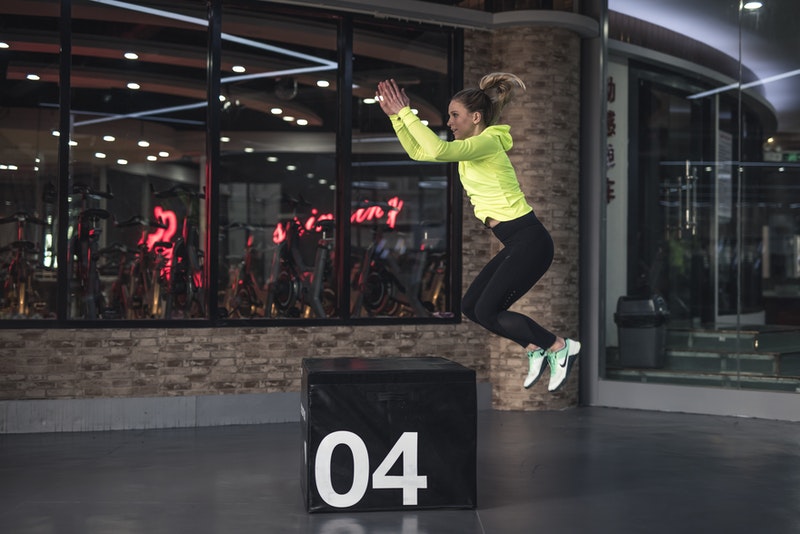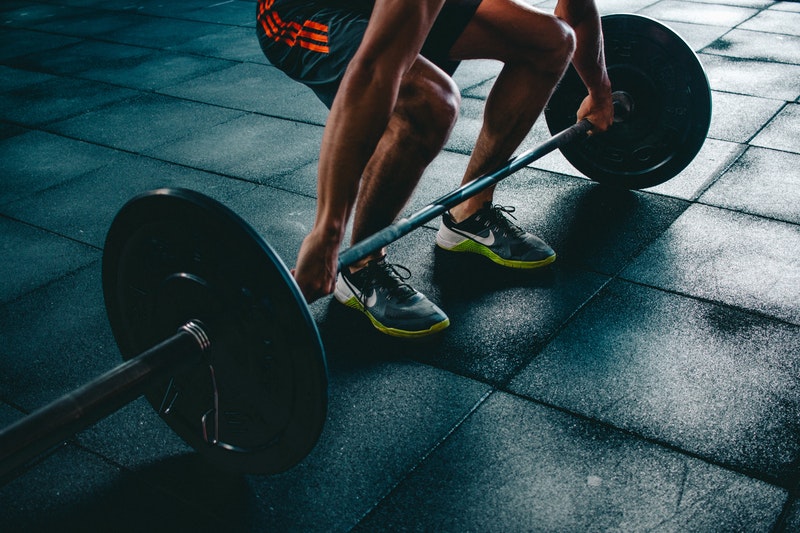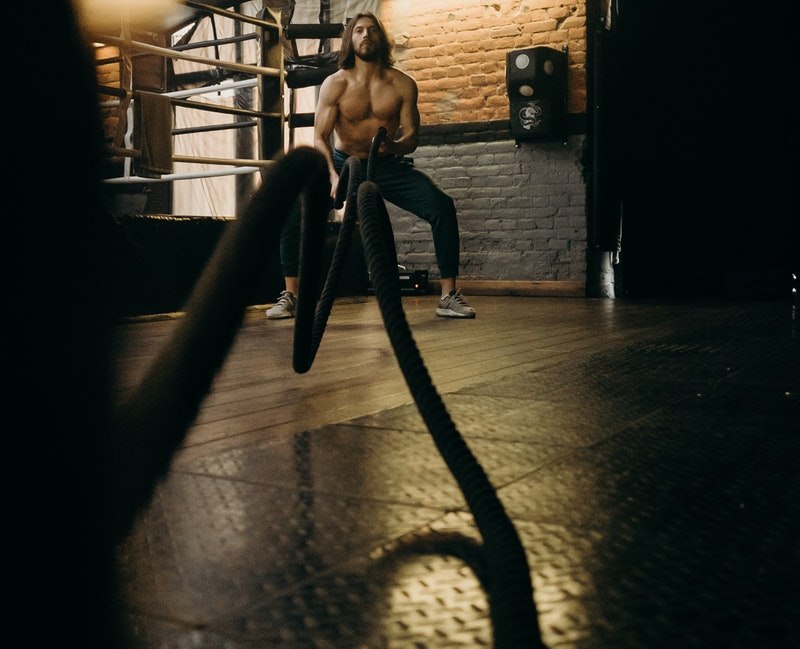Creating a workout plan that fills all needs for all-around fitness isn’t as easy as writing a weight training program and calling it good. A complete workout plan has many different training modalities to ensure the trainee has a balance between all aspects of fitness, which is optimal for health and body composition. This guide will show you how to make a workout plan!
Training Modalities For A Complete Plan
Fitness is about more than how much you can lift or how fast you can run a mile. Physical fitness entails everything from being explosive for short amounts of time to sustaining low effort exercise for long bouts.
Many trainees neglect one, or more, aspects of fitness and end up with an imbalanced training program. Or they may think that some modalities don’t apply to them because it isn’t their main goal.

For example, distance runners may neglect Sprints and Strength Training while Powerlifters may neglect Aerobic and Mobility training.
All aspects of fitness are necessary for optimal health and body composition!
For a complete workout program, you need to address these training modalities:
- Power Training
- Strength Training
- Aerobic Training
- Mobility/Flexibility Training
Without the inclusion of each, you simply don’t have a complete workout plan!
Power Training
Power training works to improve explosive ability. It’s typically performed with low, or no, resistance. All-out Sprints, Jumps, and Throws are the typical examples of Power training.
This type of training is the most taxing on the body, so it should be placed at the beginning of a workout. Perform it right after the proper warmup.

The repetitions should take less than 5-10 seconds to complete, including the Sprints. Here are some of the most common Plyometric training movements:
- Standing Long Jumps
- Maximal Vertical Jumps
- Short Sprints
- Tuck Jumps
- Depth Jumps
- Throws (every direction)
- Plyometric Pushups
- Explosive Sled Pulls
You should aim to keep a balance of upper body and lower body movements. However, it is important to note that optimal Power training involves muscle recruitment through the entire body for optimal results.
For example, during a Tuck Jump, your legs do a lot of work. But your Core must engage to tick your legs as high as possible. Your upper body must activate to swing up to jump higher.
Every Plyometric movement is essentially a full-body exercise when done right.
For training volume, a recent training study showed that around 120 repetitions per week were optimal to increase sprinting speed, jump ability, and strength levels.
Somewhere around 50-75% of these repetitions should be sub-maximal in the effort and used as a warm-up for the actual maximal effort work.
Strength Training
Resistance training tends to be the focus of most trainees. It’s for a good reason though. Strength training contributes more to fitness than other training modalities!
It can improve Power, Aerobic Endurance, and even Flexibility when you use the full range of motion.
You can use your body weight, resistance bands, free weights, or machines to train effectively.

What matters most is the intensity and volume of the training. A recent meta-analysis showed that 5-9 working sets per week per muscle group is effective but 10 or more is optimal. Going above 20 sets is typically too much.
Lower rep ranges work well for maximal strength and higher reps work for muscular endurance. A mix of both is optimal.
A lot of fuss is made about time under tension and rest between sets but none of that compares to optimal intensity and volume.
Training within the given set range while taking each set within 1-2 reps of failure will give you optimal results!
Stick with compound exercises for efficiency:
- Squats
- Lunges
- Deadlifts
- Bench Press/Pushups
- Overhead Press/Handstand Pushups
- Pull-Ups
- Barbell/Inverted Rows
Aerobic Training
Aerobic training is a huge debate among hobbyists and professionals in the fitness industry.
How much should you do? Should you do HIIT or low-intensity cardio? Is it even necessary?
Unfortunately, there isn’t a great one-size-fits-all answer!

Cardio is important for health. A study on long term aerobic training showed that 4 or more endurance workouts per week show the best health benefits in seniors who have trained for at least 25 years.
Luckily, weight training and Plyometrics both tax your aerobic system. They are essentially HIIT training with more benefits.
That means your additional Aerobic training should be low-intensity work. Simply including 2-4 sessions per week will suffice.
This could be running, hiking, swimming, walking, biking, etc. It shouldn’t impair your workout recovery for the more intense training. It should improve it!
Mobility & Flexibility
Yoga, Pilates, and basic mobility and flexibility training are overlooked by a ton of trainees. But, your muscles and joints will thank you for regular work.
Mobility drills should be done before each workout. It can be as little as 5 minutes!

More in-depth work can be done once or twice a week, typically on rest days. Take a yoga class and see how hard it is!
Putting It Together
I know that is a lot to process and out together for a workout program. But, that’s why there are professionals who do it for a living!
Let’s say you train hard 3 days a week, have 3 active rest days, and 1 day for Yoga. This is how your week will look:
- Monday – Power & Strength Training
- Tuesday – Aerobic Training
- Wednesday – Power & Strength Training
- Thursday – Aerobic Training
- Friday – Power & Strength Training
- Saturday – Aerobic Training
- Sunday – Yoga
A Power & Strength workout will look like this:
- Mobility warmup – 5-10 minutes
- Power Training – a mix of jumps and throws for 40 total reps
- Squats – 4 sets for 5-8 reps
- Romanian Deadlift – 4 sets for 5-8 reps
- Incline Bench Press – 4 sets for 5-8 reps
- Barbell Rows – 4 sets for 5-8 reps
- Mobility cooldown – 5-10 minutes
Each workout can use different Plyometric and Strength exercises, along with different rep ranges.
Each Aerobic workout can consist of 20-60 minutes of a light, fun activity. Play a recreational sport, go on a hike, or go canoeing. Find something you enjoy!
Your Yoga class will probably last around an hour and the rest of the day can be rest.
There you have it: a template for a complete workout program. You have the flexibility to choose exercises you like and can manipulate training volume and intensity as you see fit!
Dynamic Warm-Up
It is also a paramount to include a warm-up in your plan for injury prevention. During the warm-up is best to slightly elevate your heart to help you improve your blood flow to the muscles.
Examples of dynamic movements include leg swings, standing squats, lunges with an upper body twist, circular arm swings, cat-camel exercise, semi-circle neck movement, and so on.
If you have any home ellipticals equipment, a short and intense use on any type of rowing machines or any types of treadmills would also be a great option, to warm up your body.
Now Go Train!
There aren’t too many recreational trainees that know how to create a complete workout program. But, armed with this guide, you can create one that is complete from top to bottom. Enough talking, let’s go train!
